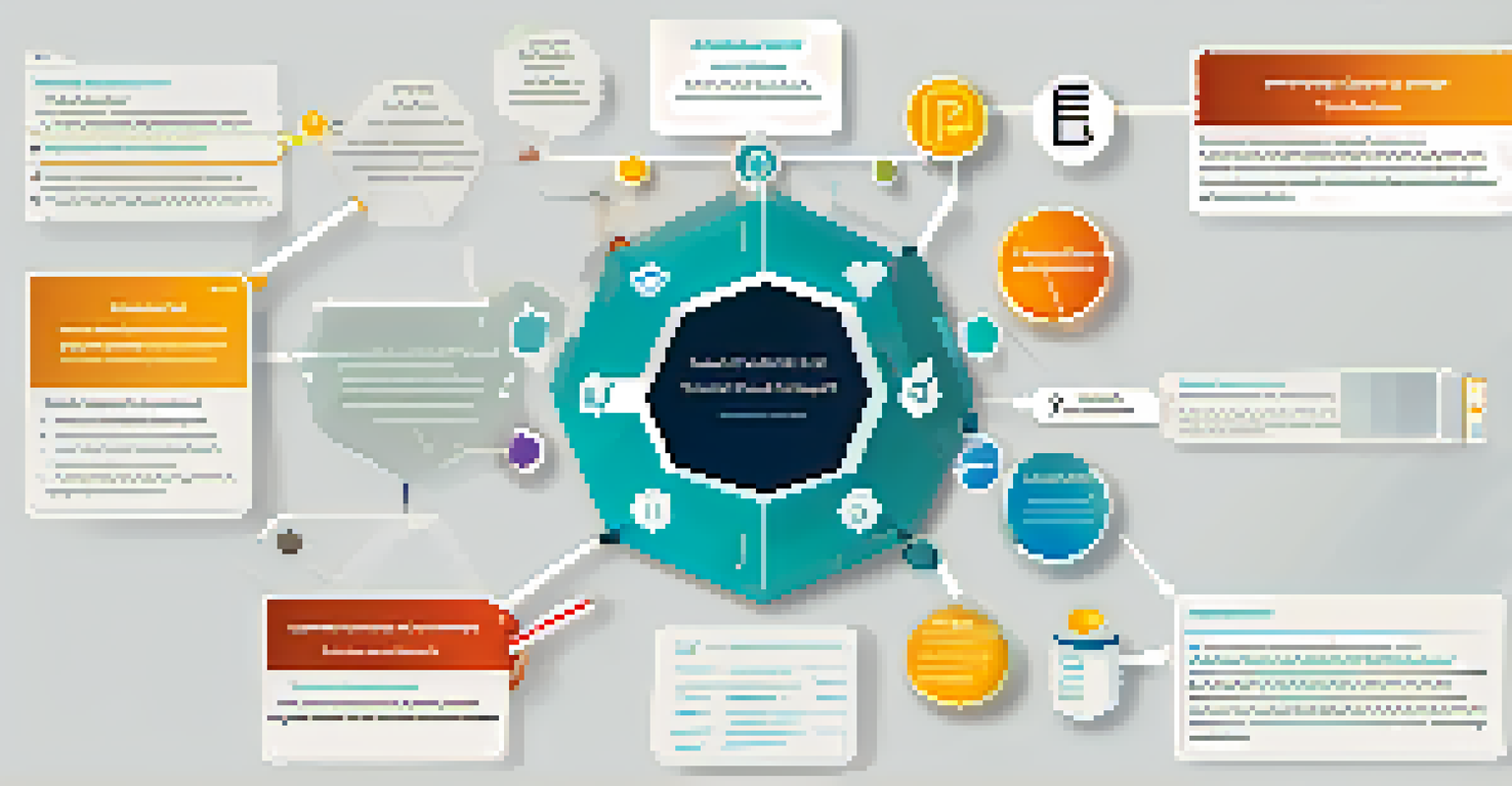Effective Documentation for Ethereum Smart Contracts

Why Documentation Matters in Smart Contracts
Documentation serves as the backbone of successful Ethereum smart contracts. Without proper documentation, developers may struggle to understand the purpose and functionality of their code, which can lead to costly errors. Clear documentation not only helps the original developers but also assists others who may interact with or audit the smart contract later.
Documentation is a love letter that you write to your future self.
Imagine trying to navigate a maze without a map; documentation provides that crucial guidance. It allows developers to communicate their intentions and decisions clearly, ensuring that everyone involved is on the same page. Additionally, good documentation can enhance the credibility of a project, making it more appealing to potential investors and users.
Ultimately, effective documentation can save time, reduce misunderstandings, and enhance collaboration among team members. It's an investment that pays off in smoother development processes and better project outcomes.
Key Elements of Comprehensive Smart Contract Documentation
A well-rounded documentation strategy should include several key elements, starting with an overview of the contract's purpose and functionality. This section should explain what the contract does and the problem it aims to solve, making it easier for others to grasp its value. Additionally, include detailed descriptions of functions, variables, and any events triggered by the contract.

Another important aspect is to provide clear examples demonstrating how to interact with the contract. These examples can serve as practical guides for developers looking to implement the contract in their own projects. Furthermore, use diagrams or flowcharts where necessary to illustrate complex processes visually; this can make the information more digestible.
Importance of Documentation
Proper documentation is essential for understanding, collaborating on, and maintaining smart contracts, ultimately preventing costly errors.
Lastly, don’t forget to include a section on potential risks and limitations associated with the contract. This transparency can help users make informed decisions and encourages responsible usage of the smart contract.
Choosing the Right Documentation Tools and Formats
Selecting the appropriate tools and formats for your documentation can greatly enhance its accessibility and usability. Markdown is a popular choice due to its simplicity and ease of integration with platforms like GitHub. It allows developers to write in a readable format that can easily be converted into HTML or PDF files.
If you think good documentation is expensive, try bad documentation.
Another option is to use dedicated documentation generators, such as Docusaurus or Sphinx, which can automate the process of creating a structured documentation site. These tools often come with templates and themes that make it easier to maintain consistency across your documentation.
Whichever tools you choose, ensure that they support collaboration and version control. This way, your team can update the documentation as the smart contract evolves, ensuring that it remains relevant and useful.
Incorporating Code Comments for Clarity
In-line comments within the smart contract code itself can significantly enhance clarity. These comments should explain the logic behind complex functions or critical code sections, serving as a guide for anyone reviewing the code later. Think of it as giving directions while navigating; it helps prevent confusion down the road.
By using clear, concise language in your comments, you can make it easier for other developers to pick up where you left off. Avoid vague terms and instead describe the purpose and expected outcomes of each function. This practice not only aids in understanding but also fosters a culture of collaboration within the development team.
Key Elements to Include
Comprehensive documentation should cover the contract's purpose, detailed function descriptions, usage examples, and potential risks.
Moreover, consider adopting a consistent commenting style throughout the codebase. This consistency can help maintain readability and make it easier for others to follow your thought process.
Version Control: Keeping Documentation Up-to-Date
Just like your code, documentation requires regular updates to stay relevant and accurate. Version control systems, such as Git, are invaluable for tracking changes to both code and documentation. By using branches and commits effectively, you can ensure that everyone on the team is aware of the latest updates.
Establishing a clear process for updating documentation alongside code changes is crucial. This could involve mandatory documentation reviews during code reviews or setting aside dedicated time for updating after major milestones. By prioritizing this practice, you create a culture that values documentation as much as code.
Furthermore, consider using tags or release notes to highlight significant changes in both the code and the documentation. This transparency can help users understand what’s new and how it may impact their interactions with the smart contract.
Engaging Your Audience with Visual Elements
Visual elements can significantly enhance the effectiveness of your documentation. Diagrams, screenshots, and flowcharts can break down complex ideas into more digestible formats. For instance, a flowchart illustrating a contract's decision-making process can provide clarity that text alone might struggle to achieve.
Additionally, consider including video tutorials or interactive demos if applicable. These formats cater to different learning styles and can make the documentation more engaging. When users can see the smart contract in action, they’re more likely to understand and appreciate its functionality.
Maintaining Up-to-Date Docs
Regularly updating documentation alongside code changes ensures accuracy and relevance, fostering a culture that values both documentation and code.
Ultimately, by incorporating visual elements, you not only make the documentation more attractive but also improve its educational value, making it easier for users to grasp key concepts quickly.
Best Practices for Reviewing and Maintaining Documentation
Regular review and maintenance of documentation are essential to ensure its accuracy and relevance. Establish a routine for team members to review documentation, ideally after major updates or before launches, to catch any discrepancies. This collaborative approach encourages accountability and ensures that everyone is invested in maintaining high-quality documentation.
In addition, solicit feedback from users who interact with your smart contracts. Their insights can reveal gaps in the documentation or areas that could be clearer. Consider creating a simple feedback loop, such as a comment section or a dedicated email address, where users can share their thoughts.

Lastly, keep an eye on industry trends and best practices for documentation. Staying informed can help you adapt your approach as the landscape evolves, ensuring that your documentation remains a valuable resource for developers and users alike.